We have all heard the expression “a picture is worth a thousand words.” Because of its truth, it’s one of the many reasons why the visual nature of a 3D project model can bring clear and precise information to the forefront for all stakeholders.
Now you may be thinking, “Wait a minute, Dale. I cannot get all my stakeholders to reap the benefit because they don’t have time to learn another software program.” To that, I say but what if they only had to select from one menu item to see a color-coded model according to what they want to see?
What I’m saying is that this does not have to be hard or time consuming. Making a 3D model part of your normal workflow may seem a little different at first, but in reality, you are already encompassing the 3D model into your process via drawings, Microsoft Excel® worksheets or other means and methods. I would encourage you to incorporate the model as part of your workflow and minimize or even eliminate some of the other means and methods to gain efficiency.
The Clarity of 3D Models
Pie charts and graphs provide great visibility into our projects and help paint that picture for all to be on the same page, yet how much more could a 3D, colorized model bring to the table?
Utilizing a 3D model to capture construction activities can be very beneficial for the project. Visualizing the project in 3D may provide insights to things that would not be seen via charts or in spreadsheets until it’s too late.
Construction status is certainly being tracked somehow, some way already on your project. There are many ways to track construction progress, and some provide a clearer picture or take less effort than others.
One method to track construction progress could be highlighting plan drawings, which need to be re-highlighted for new revisions. Another method would be utilizing a spreadsheet. And yet another method could be through graphs and pie charts. All three are effective, but are they painting the clear picture you are looking for?
Here’s some of what you can enjoy through 3D model clarity.
Track and communicate generalized construction status:
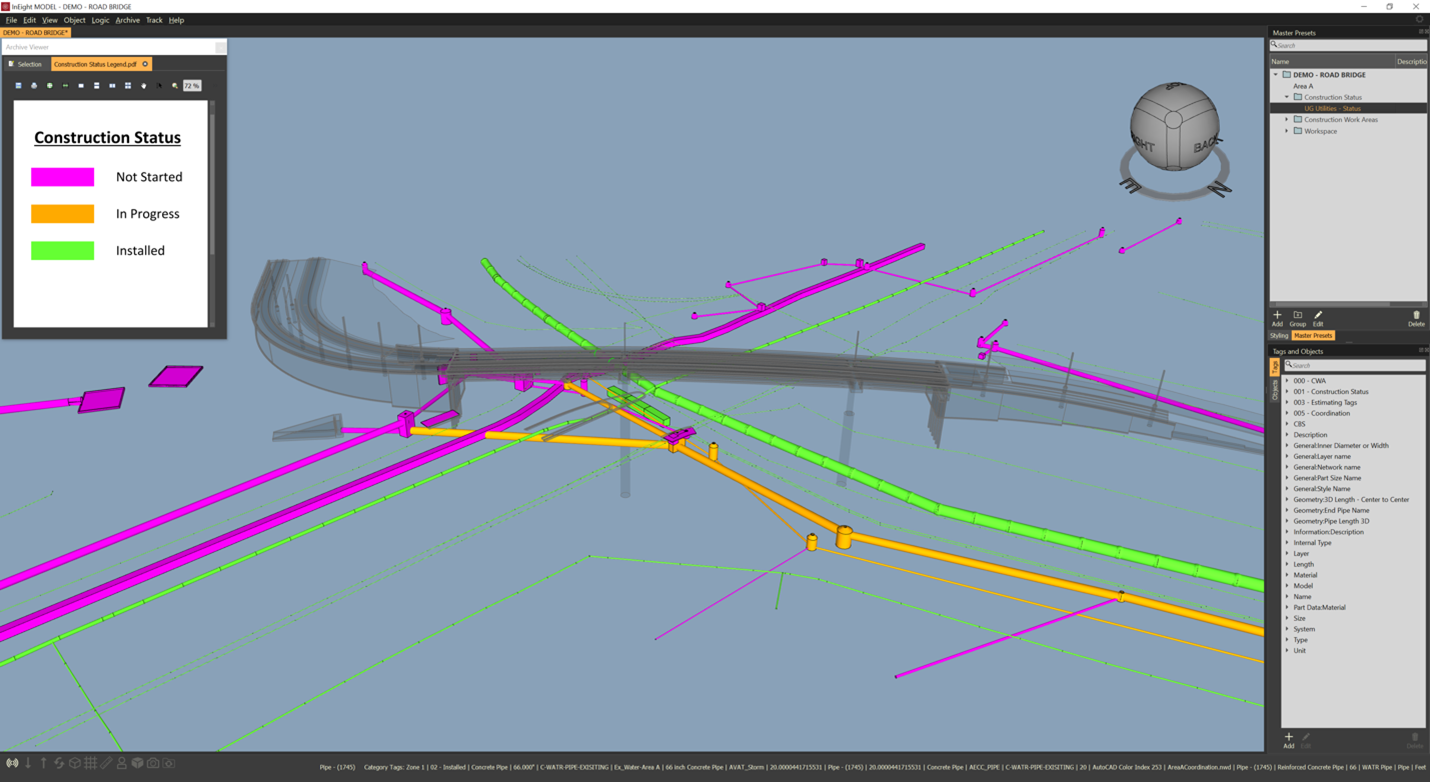
Track and communicate subcontractor status, i.e., not started, material on site, drilled pier hole, rebar cage installed, delays or issues, etc.:
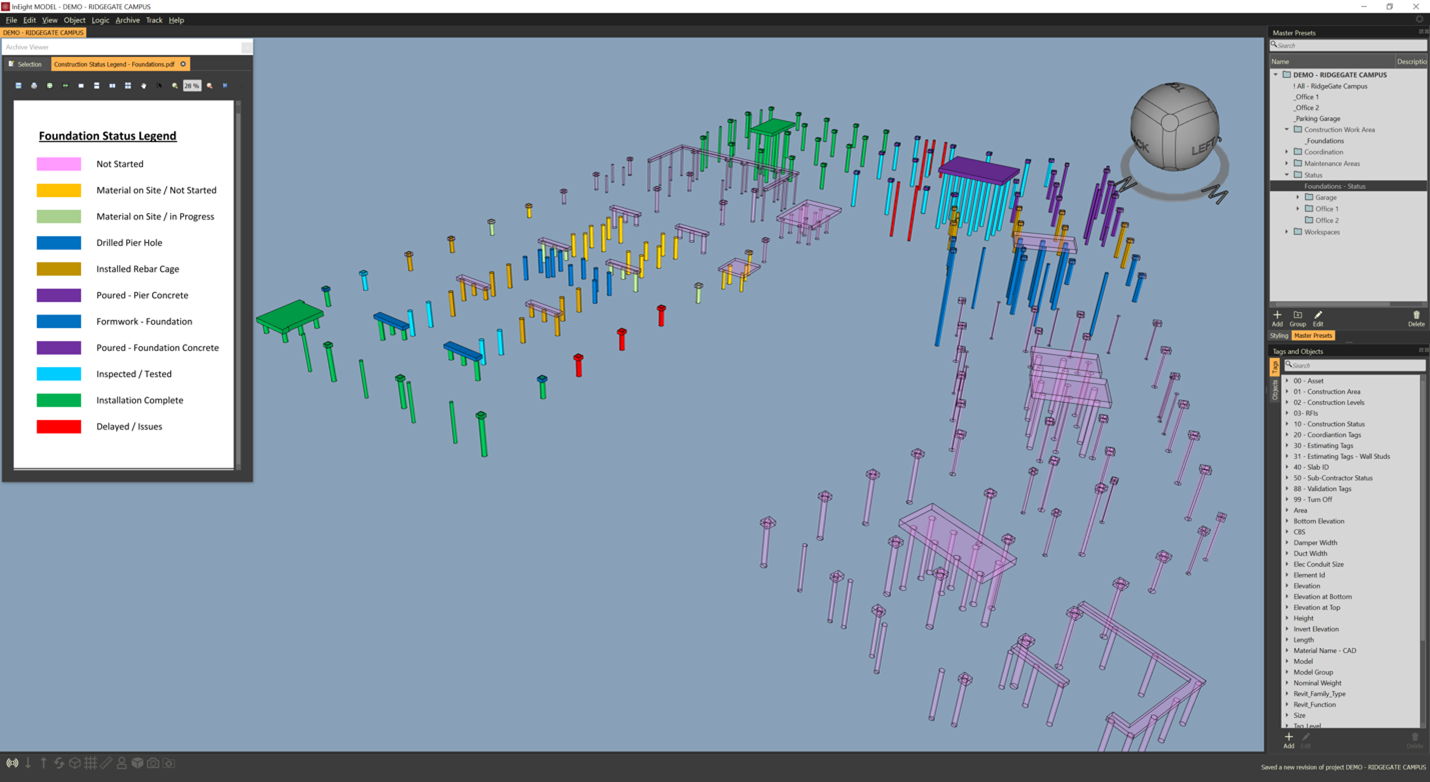
Filter your model down to work areas and visualize trades in the same area to identify any possible congested areas according to space and schedule:
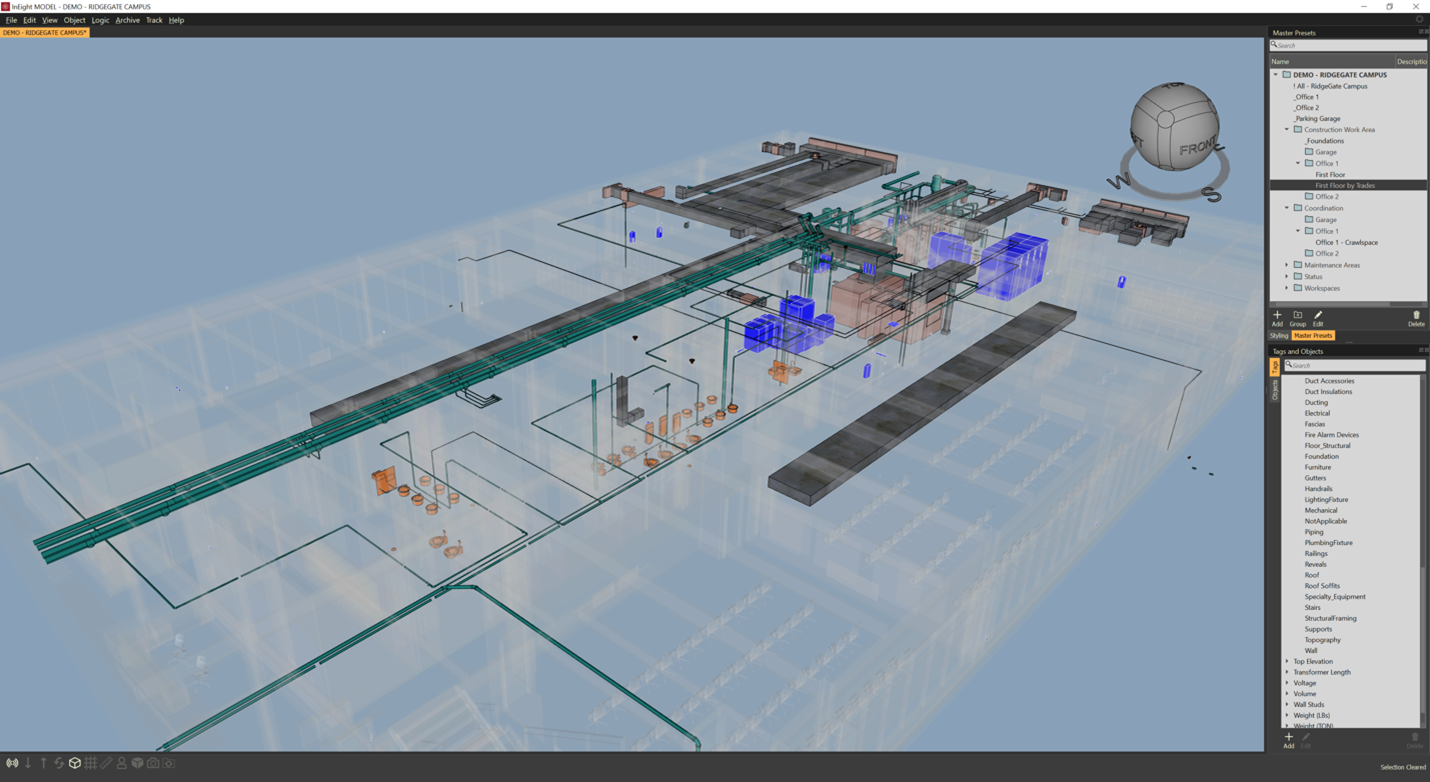
Use external model information linked to model data to visualize material status (ordered, in fabrication, on site, etc.) to help with planning chunks of work:
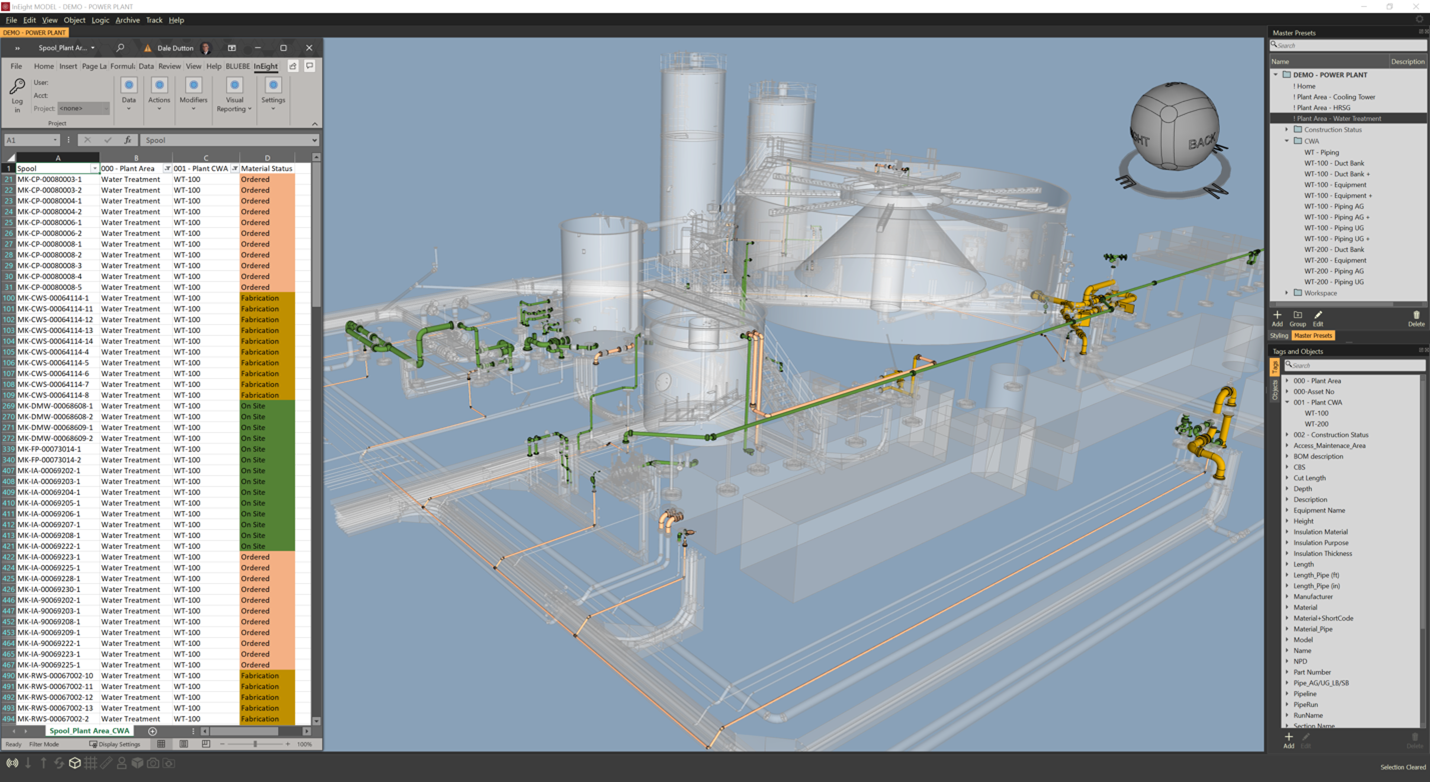
Visualizing Work Packaging or Work Face Planning provides a whole new level of understanding project status, trades in the same area, safety concerns and more:
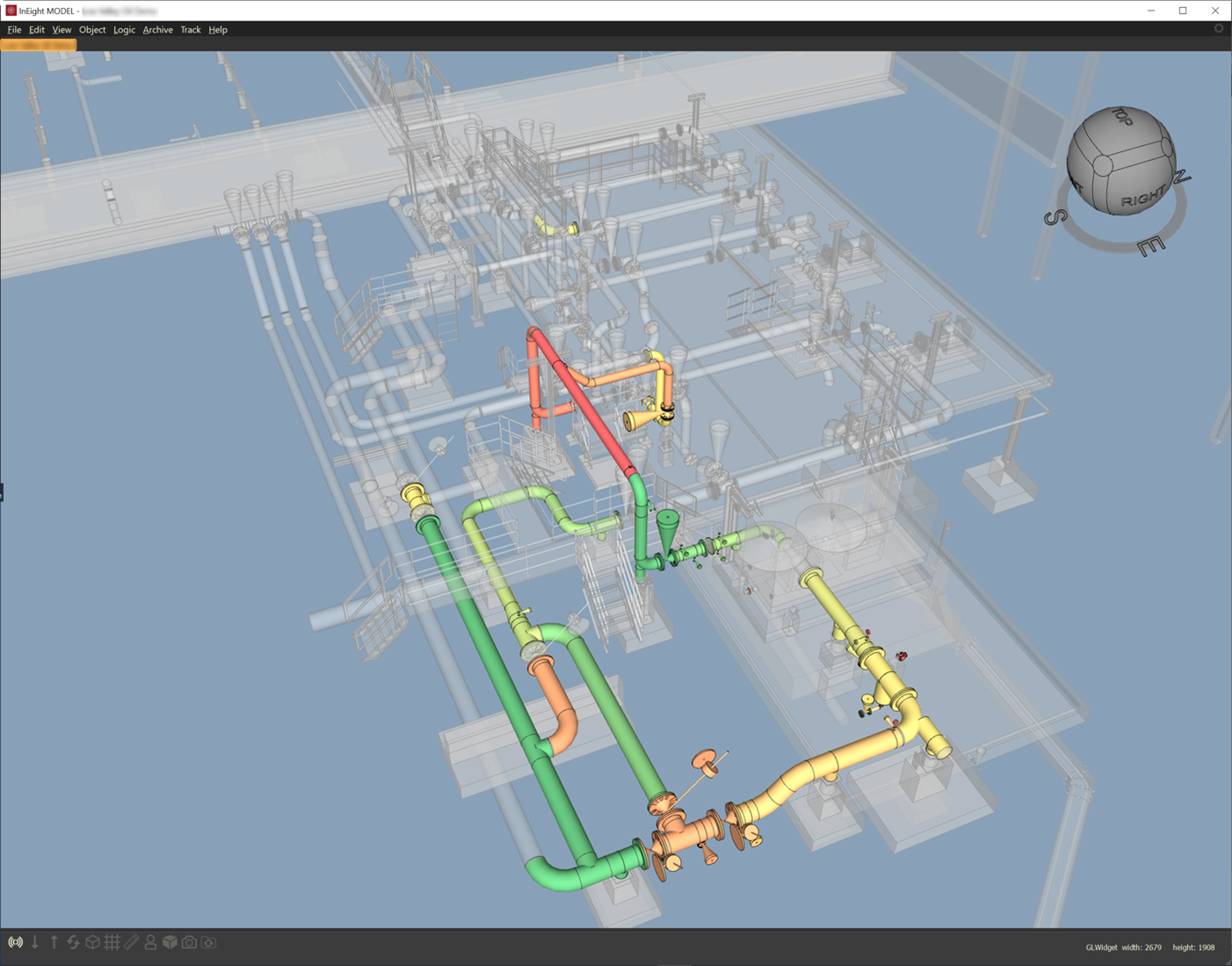
I’m sure these examples have triggered some thoughts on how you could colorize your 3D model to better share what is important within your project team.
Just remember that the right 3D model visualization can bring great value and reality to the overall project, and it communicates data and information in a concise method for all to understand. Capturing construction information within the model or in applications linked to model metadata provides the most efficient method to not duplicate effort and visualize up-to-date project information.
Ready to take a deeper dive? Explore InEight’s Virtual Design Construction solution and schedule a demo now.




